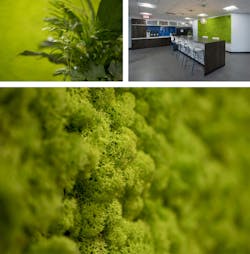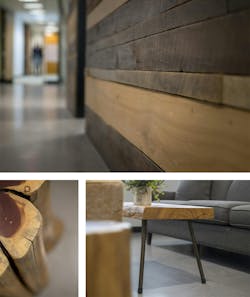Transform your work environment with biophilic design
Two significant elements of a thriving workspace are the connection to nature and natural light. Studies have shown that employees who have access to natural elements in their work environment are proven to be happier and more productive. Office productivity can be increased by 8% and rates of well-being up by 13% with the addition of biophilic design.
Incorporating variation in environments that engage more than one of the senses through offering plant walls, outdoor patio spaces, or large windows can be great options to link employees to nature.
Biophilic design aims to connect the built environment to the natural world. There is a wide pool of evidence proving all the positive outcomes stemming from biophilic design. Studies show those who experience these spaces may feel the benefit of lower blood pressure, a lower heart rate, expedited healing, and improved cognitive performance.
As design professionals, it is necessary to keep the end-user in mind throughout the entirety of the design process to make our spaces better places for people to live, work, and play. Biophilic design is one way of integrating humanity’s well-being into our creations.
Businesses that embrace designing (or even retrofitting) a space, with the comfort of the employee in mind, see advantages like decreased illness and absenteeism and increased efficiency, contributing to lower operating costs (Browning, 1998), as well as an increase in staff retention. Simple ways to incorporate biophilia into the workplace include water features, moss walls, incorporation of natural materials like wood, carpet that mimics natural landscapes, integration of natural, earth-tones, etc.


